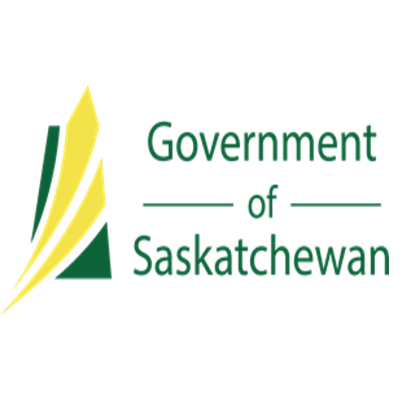Prairie Landscape Inventory (PLI) - Cypress Upland Classification
Land cover classification image for the Cypress Upland ecoregion of Saskatchewan with a spatial resolution of 10m. The goal of this land cover classification was to distinguish native from tame grasslands. The classification was based on Sentinel-1 and Sentinel-2 imagery using machine learning analysis in the Google Earth Engine platform. The classification was conducted on imagery acquired in 2023, and the classification model was built with field data collected in 2023. There are seven classes in total: native grassland, tame grassland, cropland, shrubs, trees, water, and urban area.
Download: here The Prairie Landscape Inventory (PLI) aims to develop improved methods of assessing land cover and land use for conservation. Native grassland has historically been one of the hardest to map at-risk ecosystems because of the challenges in distinguishing native grassland from tame grassland land cover using remotely sensed imagery. This classification distinguishes native grassland from tame grassland and will provide valuable information for habitat suitability for native grassland species, identifying high biodiversity potential and invasion risk potential. The classification map has seven (7) classes. The mixed grassland class included in the PLI land cover classification for other prairie ecoregions was not modelled in the Cypress Upland. 1. Cropland This class represents all cultivated areas with crop commodities, including corn, pulse, soybeans, canola, grains, and summer-fallow. 2. Native grassland This class represents the native grassland areas that are composed of at least 75% native grass, sedge and forb species, such as the needle grasses and wheatgrasses along with June grass and blue grama grass. Unbroken grassland that is invaded by species like Kentucky bluegrass, crested wheatgrass or smooth brome, such that native cover is less than 75%, is not considered native for the purpose of this project. 4. Tame grassland This class represents the tame grassland areas that are composed of at least 75% seeded or planted species with introduced grasses and forb species such as crested wheatgrass, smooth brome, Kentucky bluegrass, alfalfa, and sweet clover. 5. Water This class represents permanent water locations such as lakes and rivers. 6. Shrubs This class represents the sites dominated by woody vegetation of relatively low height (generally +/-2 meters) with shrub canopy typically >20% of total vegetation cover. 7. Trees This class represents the coniferous/deciduous trees, mixed-wood area, and other trees >2 meters height with tree canopy typically >20% of total vegetation cover. 9. Urban area This class represents both urban municipalities and buffered roads. Urban municipalities was used to mask the urban/developed area class of the Annual Crop Inventory 2021 (Agriculture Agri-Food Canada). Colour Classes: Value Label Red Green Blue 1 Cropland 255 255 190 2 Native grassland 168 168 0 4 Tame grassland 245 202 122 5 Water 190 232 255 6 Shrubs 205 102 153 7 Trees 66 128 53 9 Urban area 128 128 128 Accuracy metrics This model has an overall accuracy of 92 per cent. The table below summarizes the user’s accuracy, producer’s accuracy, and F1-score of the model on the validation dataset. Class User’s accuracy (%) Producer’s accuracy (%) F1-score Cropland 96 96 0.96 Native grassland 90 93 0.92 Tame grassland 93 71 0.82 Water 100 100 1.00 Shrubs 77 88 0.83 Trees 96 996 0.96
Simple
- Date ( RI_367 )
- 2024-11-27
- Date ( RI_366 )
- 2024-11-27
- Status
- onGoing; enContinue RI_596
- Maintenance and update frequency
- unknown; inconnu RI_543
- Keywords ( RI_528 )
-
- prairie
- landscape
- inventory
- pli
- grassland
- ecoregion
- machine learning
- native prairie
- landcover
- habitat
- raster
- cypress upland
- biodiversity
- Government of Canada Core Subject Thesaurus Thésaurus des sujets de base du gouvernement du Canada ( RI_528 )
-
- Government information
- Use limitation
- Standard Unrestricted Use Data License (Version 2.0) - Saskatchewan (https://gisappl.saskatchewan.ca/Html5Ext/Resources/GOS_Standard_Unrestricted_Use_Data_Licence_v2.0.pdf)
- Access constraints
- license; licence RI_606
- Use constraints
- license; licence RI_606
- Spatial representation type
- grid; grille RI_636
- Metadata language
- eng; CAN
- Metadata language
- fra; CAN
- Topic category
-
- Imagery base maps earth cover
- Begin date
- 0001-01-01
))
- Reference system identifier
- unknown / unknown / unknown
- Distribution format
-
-
HTML
(
unknown
)
-
HTML
(
unknown
)
- OnLine resource
-
original metadata (http://geohub.saskatchewan.ca)
(
HTTPS
)
Dataset;HTML;eng
- File identifier
- 581f5a8e-d488-50e5-4989-37d4cc1bf673 XML
- Metadata language
- eng; CAN
- Character set
- utf8; utf8 RI_458
- Hierarchy level
- dataset; jeuDonnées RI_622
- Date stamp
- 2025-02-25
- Metadata standard name
- North American Profile of ISO 19115:2003 - Geographic information - Metadata
- Metadata standard version
- HNAP ISO:19115 - 2003
Overviews

Spatial extent
))
Provided by

 Arctic SDI catalogue
Arctic SDI catalogue